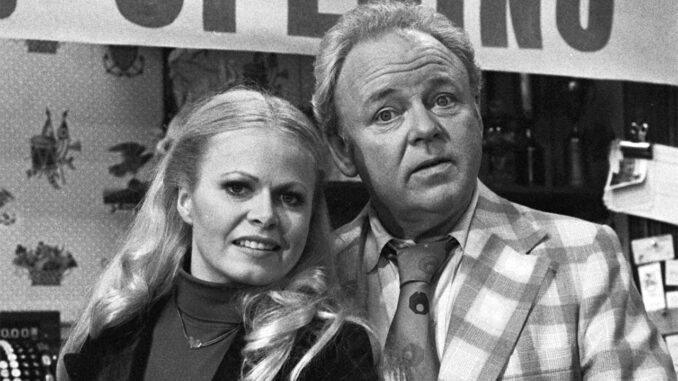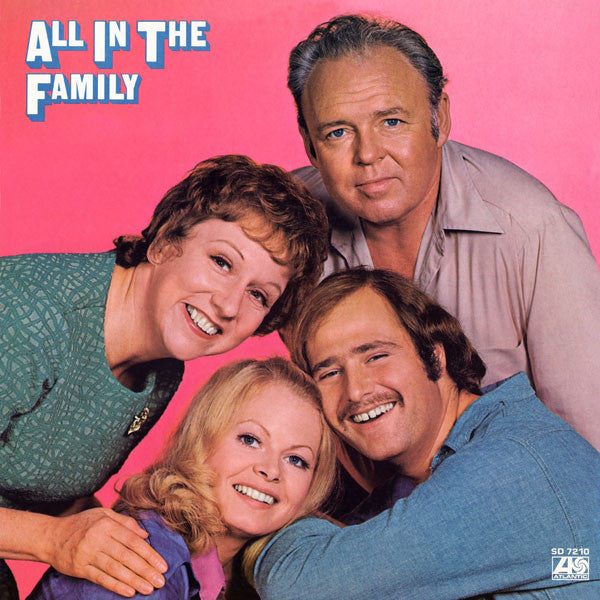
How All in the Family Transformed American Television
When All in the Family premiered on CBS in 1971, few could have predicted just how profoundly it would transform the landscape of American television. At the time, the medium was dominated by light-hearted sitcoms, family-friendly comedies, and fantasy-based shows that mostly avoided anything too controversial or politically charged. But All in the Family took a bold, unapologetic approach to social issues, and it wasn’t long before it redefined what a television show could be—both as entertainment and as a tool for cultural change.
Created by Norman Lear and starring Carroll O’Connor as the irascible, prejudiced Archie Bunker, All in the Family broke every rule about what was acceptable in primetime television. It pushed the boundaries of what could be said on the air, using humor to address issues like racism, sexism, class conflict, and political polarization. In the process, All in the Family didn’t just entertain—it opened the door to a new era of television, one that was unafraid to tackle real-world issues in a way that resonated with viewers and sparked national conversations.
Let’s take a deeper look at how All in the Family transformed American television and why its influence can still be felt today.
1. Breaking Taboos: Comedy as Social Commentary
Before All in the Family, television sitcoms were largely about escapism, offering light-hearted humor and portraying an idealized version of American life. Shows like Leave It to Beaver and Father Knows Best presented an image of the American family that was clean, simple, and, most of all, unchallenging. But All in the Family threw those conventions out the window, using its central character, Archie Bunker, as a vehicle for exploring some of society’s most uncomfortable realities.
Archie was a loud, crude, and often bigoted working-class man who reflected the social tensions of the time. His outdated views on race, gender, and politics became the foundation for the show’s biting satire. But rather than simply mocking Archie, All in the Family allowed audiences to see the world through his eyes—exposing the absurdity of his beliefs while also showing how deeply ingrained those prejudices were in society. In doing so, the show brought attention to issues like racial inequality, the changing role of women, and generational divides in ways that had never been seen before on television.
A Bold Example: The Meathead vs. Archie Debate
One of the most powerful dynamics on All in the Family was the relationship between Archie and his liberal son-in-law, Michael “Meathead” Stivic (played by Rob Reiner). Their heated debates about everything from the Vietnam War to civil rights became the show’s defining feature. Meathead’s progressive views often clashed with Archie’s conservative, working-class mindset, and their arguments were more than just humorous—they were a direct reflection of the real-life political and cultural upheavals of the 1960s and 1970s.
This constant clash between old-school bigotry and new progressive ideals captured the tension in American society at the time. And rather than resolving these conflicts in a tidy, feel-good manner, All in the Family allowed its characters to be flawed, human, and sometimes stubborn in their views. This made the show feel real, and it encouraged viewers to question their own beliefs and assumptions.
2. A Platform for Controversial Topics
All in the Family didn’t just stop at airing debates between Archie and Meathead—it used its platform to address a wide range of controversial issues head-on. Episodes tackled everything from racism and homophobia to abortion, mental illness, and women’s rights. The show never shied away from taboo subjects, instead using humor and satire to spark dialogue about the nation’s most pressing problems.
Take, for example, the groundbreaking episode “The Draft Dodger,” which aired in 1973. The episode addressed the sensitive topic of the Vietnam War and the draft-dodging movement. In it, Archie’s nephew comes to visit after avoiding the draft, and the show explores the generational and ideological divide surrounding the war. By having Archie confront his own patriotic views while grappling with his personal relationship to his nephew, the show tackled a deeply divisive issue in a way that was both humorous and thought-provoking.
Another example is the episode “Archie’s Sister,” which tackled the issue of women’s reproductive rights. When Archie’s sister reveals that she is pregnant and wants an abortion, it sparks a debate that forces the characters to confront their attitudes about women’s autonomy. While these kinds of episodes might seem tame by today’s standards, at the time, they were revolutionary—no other network show had dealt with these topics so openly.
The Impact on Future TV
By regularly addressing controversial issues, All in the Family set the stage for later TV dramas and comedies that took on social issues. Shows like The Jeffersons, Maude, and Good Times, all of which were spin-offs from All in the Family, continued in this tradition, further pushing the envelope on what television could discuss. Later series like The Simpsons and Roseanne also drew from All in the Family’s legacy, blending humor with social commentary in ways that challenged and engaged viewers.
3. Changing the Role of TV Characters
Before All in the Family, characters on television were largely depicted as idealized versions of real people—well-meaning, good-hearted, and always in control of their emotions. But All in the Family turned that notion on its head, presenting characters who were deeply flawed, often offensive, and not always likable. This shift was incredibly significant because it humanized television characters and made them more relatable to real-life audiences.
Archie Bunker, as the show’s central character, is a prime example of this shift. He’s a working-class man with many prejudices, but his character was so richly developed that viewers could both laugh at him and feel sympathy for him at times. Archie’s character flaws and contradictions made him complex, and audiences could recognize that, even though he often made offensive remarks, he wasn’t an entirely bad person. His flaws were a reflection of the larger societal issues the show aimed to explore.
By challenging the audience to laugh at and with Archie, All in the Family made it possible for TV characters to evolve beyond simple archetypes. The show also helped pave the way for more nuanced portrayals of everyday Americans, including those from marginalized groups, who would later populate sitcoms and dramas that followed.
4. Setting the Stage for the Rise of the Antihero
In many ways, All in the Family was the precursor to the “antihero” phenomenon that would later dominate television. Antiheroes like Tony Soprano (The Sopranos), Walter White (Breaking Bad), and Don Draper (Mad Men) all owe something to the legacy of Archie Bunker. These characters, like Archie, were deeply flawed, morally complex, and often deeply unsympathetic. But the audience still rooted for them and followed their journeys.
Before All in the Family, television characters were often depicted as clear-cut heroes or villains. But by creating a character like Archie—who was both hilarious and repellent—the show introduced a new kind of protagonist, one that was more human, more conflicted, and, ultimately, more compelling. This shift in character complexity would shape the entire future of TV, influencing everything from sitcoms to dramas, and even reality television.
5. Opening Doors for Diverse Voices in Television
One of All in the Family‘s greatest contributions to television was its ability to amplify voices and perspectives that had been largely marginalized. The show gave a platform to working-class characters and stories, making them relatable to a broad audience. This was especially true in the case of The Jeffersons, the first All in the Family spin-off, which centered on George Jefferson, an African American businessman, and his family’s experiences with upward mobility and race.
By introducing characters from diverse backgrounds and exploring how racism, class, and culture intersected in American society, All in the Family helped expand the definition of what American television could represent. It was a radical departure from the sanitized versions of life that viewers were used to seeing on TV, and it opened the door for more inclusive, representative stories in television to follow.
Conclusion: The Lasting Legacy of All in the Family
All in the Family didn’t just change the landscape of television—it forever altered the way we view and interact with media. By using comedy as a tool for social commentary, it showed that television could tackle tough issues head-on, spark debate, and even change hearts and minds. The show made it okay to laugh at uncomfortable truths, to challenge conventional wisdom, and to confront the darker aspects of American life.
